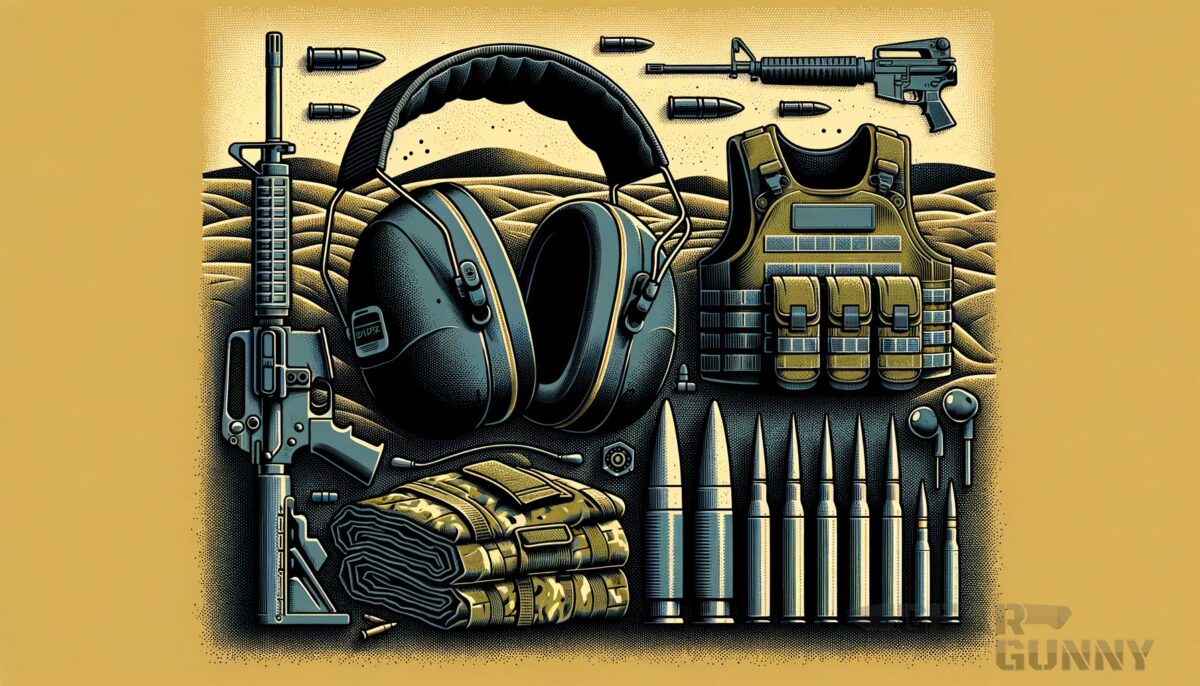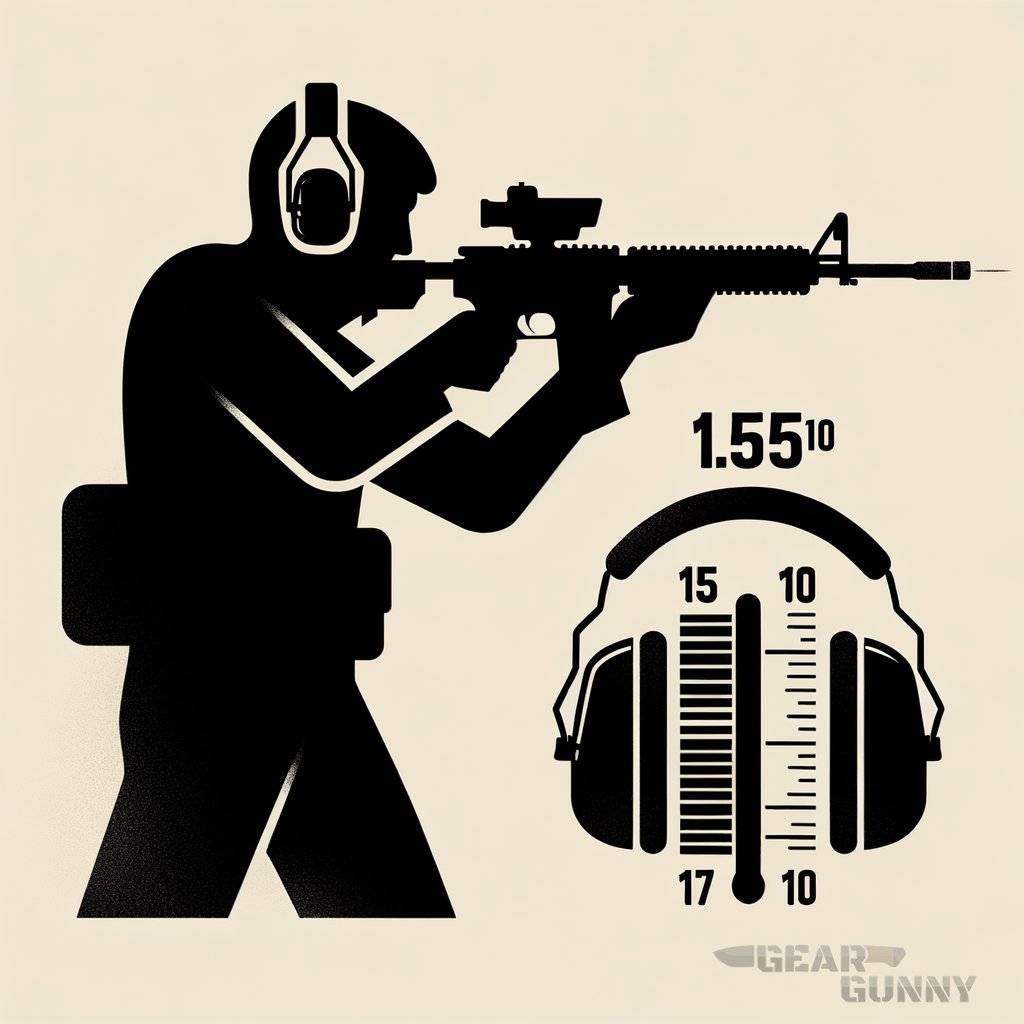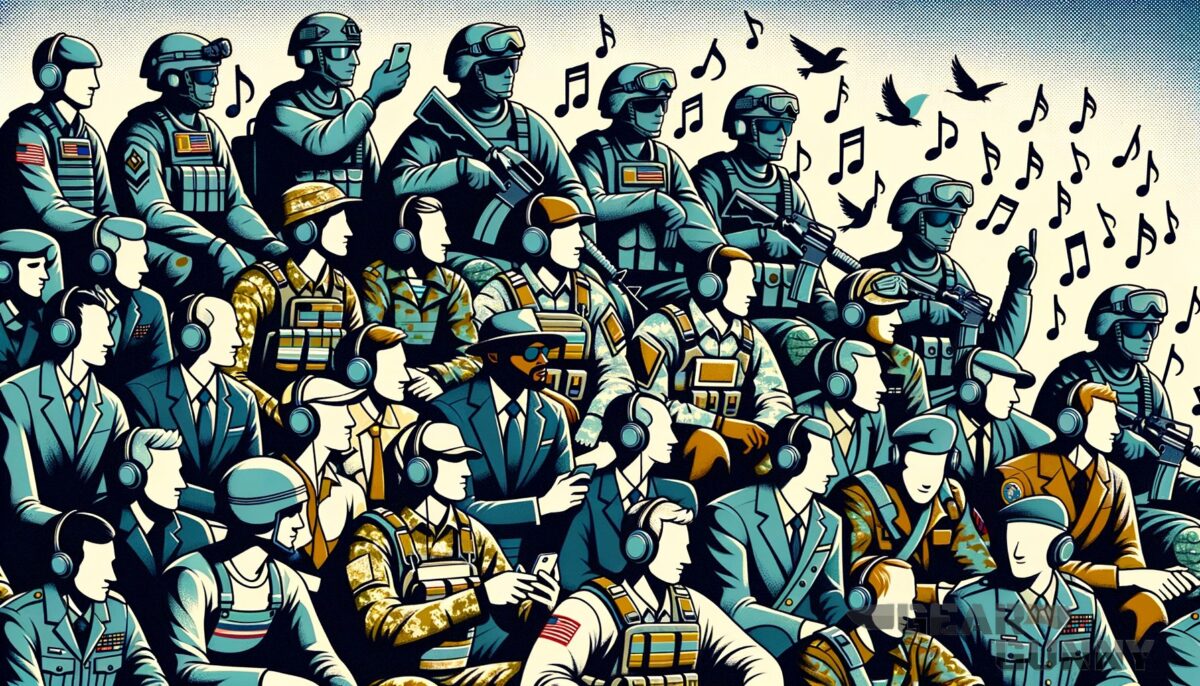Ever wondered just how loud a 5.56 round really is when it rings out on the range or in the field? Finding the right protection is crucial, much like picking the best plate carriers to safeguard your vitals. Well, buckle up, devil dog, we’re diving deep into the decibels of this common round.
And hey, we’ll also explore some other tidbits that might just keep you on target in the great outdoors or during your next tactical rendezvous.
Key takeaways
- A 5.56 round emits a thunderous 155-160 dB, comparable to a jet at takeoff.
- Continuous exposure to loud noises like gunfire can cause immediate hearing damage.
- Hearing protection is crucial when using firearms, especially in training or combat scenarios.
How loud is a 5.56 Round?
A 5.56 round is more than just a zippy piece of brass; it’s a thunderclap that commands your ears’ attention. Reports indicate that the decibel level of a 5.56 round fired from an M4 or M16 typically hovers around 155-160 dB. That’s seriously loud – louder than a rock concert or a jet during takeoff.

Without a doubt, anyone in the immediate vicinity will know it’s not quiet time.
In comparison to everyday sounds, this caliber really dishes out an earful. Exposure to such noise levels even for a short stint can cause immediate hearing damage. It’s a stark reminder that the noise discipline we practiced in the Corps is nothing to scoff at.
Protecting your ears is as important as zeroing your rifle.
Now, let’s break down why you need to take this noise seriously: * Hearing Protection: Always go for top-notch ear pro; it’s non-negotiable. * Communication: Ear-splitting noise can compromise comms – not ideal when you need to call out movements or range commands. * Long-Term Health: Constant exposure to high decibels can result in chronic hearing conditions.
And if you’re all about the tactical lifestyle, staying sharp means ensuring those ears stay in prime condition. Check out the best options to ensure your tactical gear is on point, from gloves that grip to boots that bite.
From what I’ve gathered – and keep in mind, I’m no audiologist – the racket from a 5.56 can be a real shock to the system for someone not expecting it. The first time I squeezed the trigger on my service rifle, the noise hit me like a freight train, even with ear pro snugly fit. I recall hearing tales of how some veterans could tell the difference between calibers just by the sound signature alone – a neat party trick, if not an essential skill honed in the crucible of service.
There’s also that iconic scene in “Heat” where the piercing roar of rifles in the downtown shootout nearly drowns out the dialogue – cinema rarely gets that right, but this time it was spot on. Noise may not be the most glamorous aspect of firepower, but it’s an integral part of the tactical equation. Check out what military slang BOHICA means; it might just be the reaction you have after your first time on a loud range, here.
5.11 Rush 24 Tactical Backpack

5.11 Rush 24 Tactical Backpack
Sound intensity of 5.56 Rounds compared to other noises
How does the 5.56 Compare to other common sounds?
A 5.56 round clocks in at an ear-splitting 155-160 dB, not far behind the noise level of a space shuttle launch. This intensity is not just a step up from the sounds you hear daily; it’s an entire staircase. With the decibel scale being logarithmic, each increase of 10 dB represents a tenfold increase in sound intensity.

Here’s how it stacks up:
“Choosing the right hearing protection isn’t a mere accessory; it’s a vital piece of kit, much like selecting the best plate carrier to safeguard your vitals. With the decibel level of a 5.56 round hovering around 155-160 dB, firing off a few rounds without protection is akin to attending a rock concert sans earplugs.”
- Chainsaw: 110 dB
- Rock concert: 120 dB
- Jet takeoff (100 meters away): 130 dB
- Fireworks: 150 dB
- 5.56 round: 155-160 dB
- Space Shuttle launch: 165-170 dB
Considering the potential for hearing damage starts around 85 dB, it’s clear hearing protection is mandatory when firing off a 5.56 round. Need to scope out some quality ear pro? Brush up on your gear at the best tactical belts.
What are safe noise exposure limits?
It’s not just the peak sound level that matters but also the duration. Safe noise exposure limits depend significantly on both factors. The Occupational Safety and Health Administration (OSHA) lays out these guidelines:
- 90 dB – 8 hours
- 95 dB – 4 hours
- 100 dB – 2 hours
- 105 dB – 1 hour
- 110 dB – 30 minutes
- 115 dB – 15 minutes
Blasting past those levels, a 5.56 round easily falls into the category of sounds that require immediate protection to prevent hearing loss. Dive into what goes into outfitting yourself for the wilderness or the range, like selecting the best tactical boots.
Effects on hearing and protection
Why is hearing protection critical with a 5.56 Round?
The temporary threshold shift you experience after firing a weapon is your ear’s cry for help. Repeated exposure to the 155-160 dB blast of a 5.56 can lead to permanent hearing loss or tinnitus. Proper ear protection isn’t a mere accessory; it’s a vital piece of kit.
Choosing the right hearing protection is as crucial as zeroing in your iron sights.
What are the hearing protection options?
Your options for hearing protection range from disposable foam earplugs to advanced electronic earmuffs. The Noise Reduction Rating (NRR) is the key spec to look out for; the higher the NRR, the more noise is blocked. For high-decibel environments like shooting ranges or combat scenarios, high-NRR earmuffs paired with earplugs can offer double protection.
Explore the different equipment options available on the field, like finding a knife that suits your needs.
More considerations for shooters
How do you maintain communication with hearing protection?
Even with your ears under lock and key from the noise, clear communication remains paramount. Electronic hearing protection can amplify voices while dampening gunshot blasts. This tech ensures you hear the range commands or not-so-subtle hints from your spotter.
Maintaining verbal and non-verbal comms is as crucial as your weapon system itself. It’s all about working smarter, not just harder. For details on how technology enhances field operations, like the Blue Force Tracker, read up on modern tactical communication systems.
What about the psychological impact of loud noises?
The boom of a 5.56 isn’t just a physical strain; it can be mentally jarring, too. Frequent exposure to loud noises has links to increased stress and fatigue. Keeping a clear head is essential whether you’re on a mission or practicing on the range.
Managing your mental state is as crucial as drilling your marksmanship.
Learning the ropes of psychological readiness is key. Whether it’s through mindfulness or tactical breathing techniques, staying composed under the cacophony of gunfire could give you the edge you need. And if you want a glimpse into military culture and how to keep your cool, find out what ‘blue canoe’ means in military slang.
Before we chart the sonic boom of a 5.56 round, let’s visualize how it compares to other everyday sounds. This table puts it into perspective, with sound measured in decibels (dB).
| Sound Source | Decibel Level (dB) | Duration Before Potential Harm |
|---|---|---|
| Normal Conversation | 60-70 | N/A |
| Chainsaw | 110 | About 2 hours |
| Rock Concert | 120 | Less than 2 hours |
| Jet Takeoff | 130 | Less than 1 hour |
| Fireworks | 150 | Few minutes |
| 5.56 NATO Round | 155-160 | Instantaneous |
| Space Shuttle Launch | 165-170 | Instantaneous |
This table offers a quick reference to inform you about the loudness of different sounds, including the powerful 5.56 round, and just how quickly those sounds can start to damage your hearing.
More shooting tips
Before you hit the range for some trigger time with your 5.56, keep these more tips in mind. They’ll not only help you maintain control over the noise but enhance your overall shooting experience.
- Always use fresh ear protection; worn-out gear can fail at the wrong moment.
- Incorporate dry firing drills to perfect form without the noise.
- Double up on protection in indoor ranges where sound bounces off walls.
- Consider suppressors where legal; they can significantly reduce decibel levels.
- Schedule regular hearing tests to monitor your auditory health.
And if you’re looking to perfect your engagement techniques or tactical maneuvers, investing time in what a full tang knife is and how it can be a reliable tool in the field could add another layer to your skill set.
Dos and don’ts for protecting your hearing on the range:
| Do | Don’t |
|---|---|
| Wear high NRR-rated ear protection. | Skip hearing protection, even if it’s “just a few rounds.” |
| Use electronic earmuffs for communication clarity. | Rely solely on foam earplugs in high-noise environments. |
| Regularly replace ear protection to maintain effectiveness. | Use damaged or old hearing protection gear. |
| Give your ears breaks during extended shooting sessions. | Ignore signs of hearing fatigue or pain. |
| Educate yourself on local laws regarding suppressors. | Dismiss hearing conservation as a post-shooting concern. |

Advantages and disadvantages of shooting with a 5.56
Shooting with a 5.56 rifle, like the M4 or M16, comes with its own set of pros and cons. Understanding these can help you make informed decisions, whether you’re a new shooter, a seasoned vet, or anywhere in between.
Advantages
- High-velocity round means a flatter trajectory for longer ranges.
- Abundant availability of ammunition and widespread NATO use.
- Lightweight and low recoil compared to larger calibers.
- Proven combat and self-defense effectiveness.
Disadvantages
- High noise levels could lead to hearing damage without proper protection.
- Overpenetration can be a risk in urban or home defense scenarios.
- Can be less effective against heavy cover or armor without specific ammunition.
- Higher cost of shooting due to ammo prices and the need for hearing protection.
If you are a visual learner, check out this video titled ‘This Is Why the U.S. Military Uses 5.56mm Ammo Instead of 7.62mm’
Frequently asked questions (FAQ)
Can you use suppressors for 5.56 Rifles to reduce noise?
Yes, suppressors can be attached to 5.56 rifles to reduce the noise generated upon firing. They work by trapping the expanding gases at the muzzle, diminishing the sound signature. However, suppressor availability and legality vary by location, so it’s crucial to understand your local laws before considering this option.
Is there a difference in noise level between 5.56 NATO and .223 Rounds?
Although 5.56 NATO and .223 rounds are similar in size, the 5.56 is generally loaded to higher pressures, which can result in a louder report when fired from the same rifle. However, the actual difference in perceived sound levels may not be significant to most shooters, especially if proper hearing protection is used.
How does barrel length affect the noise level of a 5.56 Round?
Barrel length can significantly affect the noise level of a 5.56 round. Typically, shorter barrels will produce a louder noise because the powder has less time to burn before the bullet exits the muzzle, resulting in more unburnt powder igniting outside the barrel. Conversely, longer barrels allow more complete combustion within the barrel, slightly reducing the noise.
Final thoughts
Wrapping up, the roar of a 5.56 round can’t be understated – it’s loud enough to demand respect and protection. Owning and firing a weapon comes not just with responsibility but with the need to be hawkish about your hearing. Remember, safeguarding your ears with stout protection plays a pivotal role in your long-term tactical readiness.
So next time you head out for some range time or fieldwork, make sure your ears are as well-protected as your torso when you don that trusted plate carrier.
How do you plan to protect your ears on your next trip to the firing range? Did I cover everything you wanted to know? Let me know in the comments section below; I read and reply to every comment.
If you found this article helpful, share it with a friend, and check out my full blog for more tips and tricks on tactical shooting and military gear. Thanks for reading, and stay sharp, stay safe!















